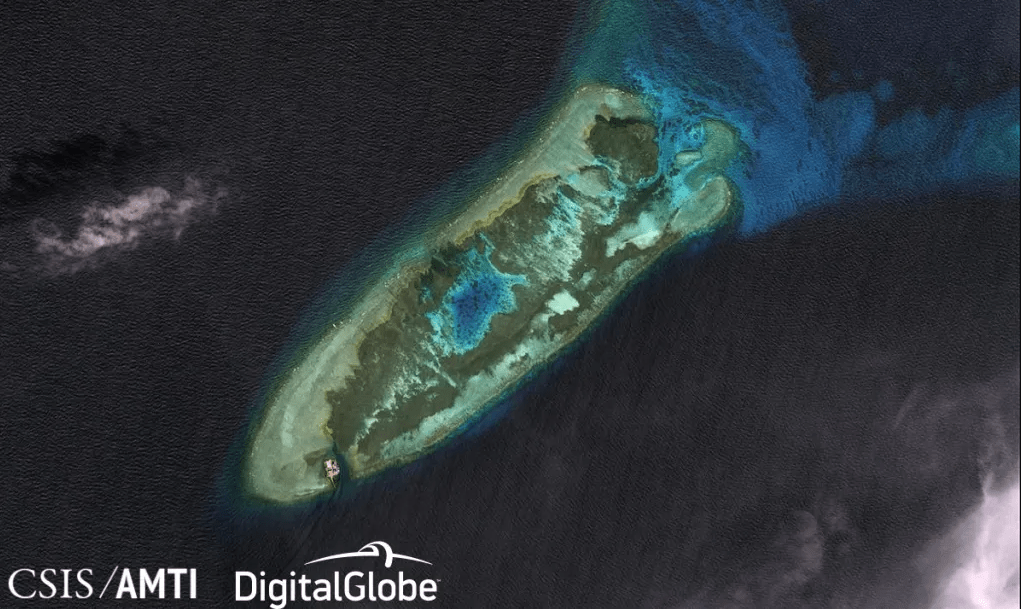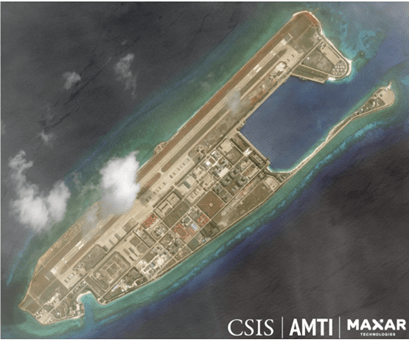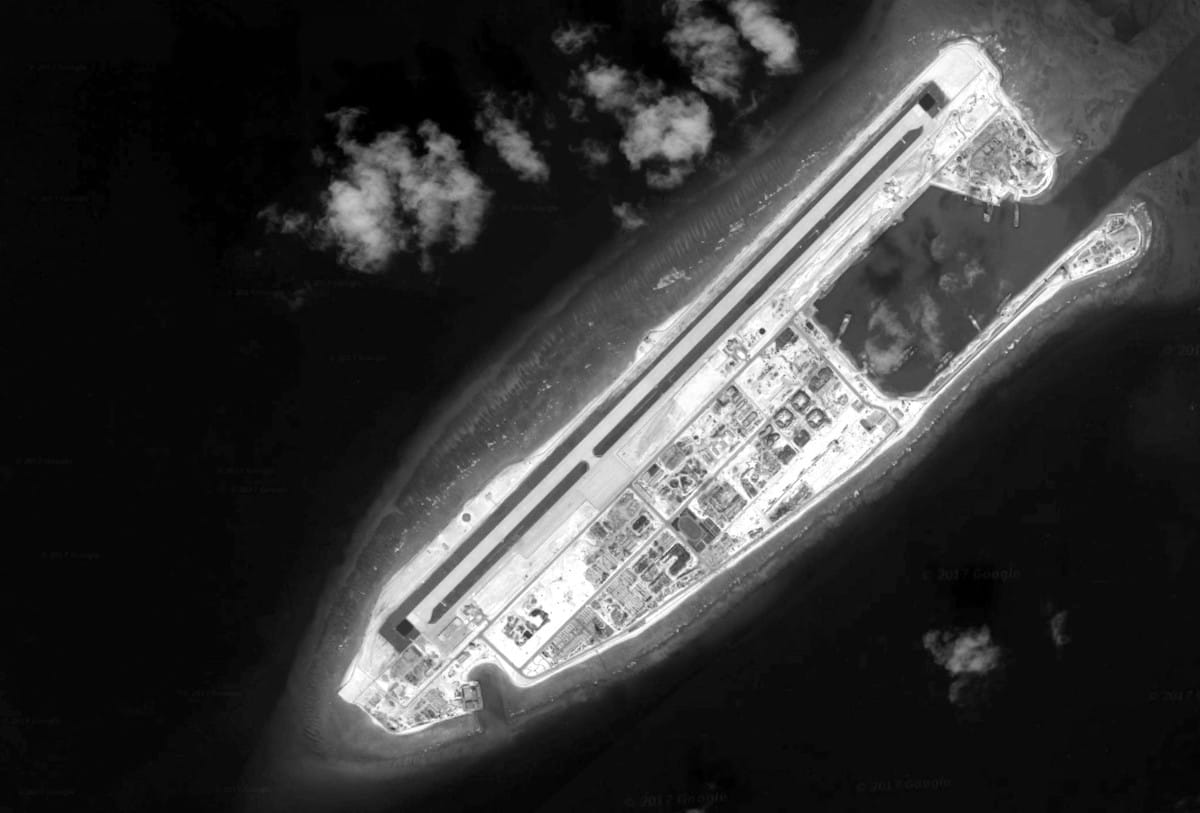Although substantial and pervasive, the contribution to the climate crisis of military institutions all over the world often goes unnoticed. The military contributes directly to the climate crisis, as its actions release a large amount of greenhouse gas (GHG) emissions and often entail destructive consequences for the environment. Secondly, the military makes it harder to address the climate crisis by preventing the relaxation of national sovereignty and national borders, which would be essential to undertake coherent and comprehensive actions in addressing the climate crisis.
The military emissions gap
Militaries are significant emitters of GHGs, whether in peacetime or during wartime operations. Recent estimates suggest that the world’s militaries are responsible for around 5.5% of global emissions, meaning that, if combined all together, they would have the fourth-largest national carbon footprint in the world – greater than that of Russia. However, little public data is usually released on their contribution to global warming. Under the United Nations Framework Convention on Climate Change (UNFCCC), reporting military emissions is voluntary. Not surprisingly, given the lack of explicit legal obligations, many countries, including some of the top 10 military spenders such as Saudi Arabia, India and South Korea, have chosen not to do so.
During COP26 two British NGOs launched the website The Military Emissions Gap with the objective to make the data that states report to the UNFCCC more transparent and accessible. In fact, reporting continues to be either wholly absent or incomplete, generally unclear, and highly inconsistent between countries. The common justification for not reporting data on military GHGs emissions is the protection of matters of national security. Additionally, when military emissions are reported, they equate to mobile fuel use (from road transport, aviation, and ships) and stationary fuel use (heating buildings at military bases, for instance). As a consequence, military equipment procurement and other supply chains, accounting for a big chunk of militaries’ emissions, are not even taken into consideration.
The lack of transparency on military GHG emissions, described as the “military emissions gap”, makes the military’s role in the climate crisis invisible to public knowledge and awareness, thereby creating real obstacles in terms of holding the military into account for its actions. At the same time, data would be key in terms of building trust and fostering cooperation – rather than competition – among different military institutions. While transparency is especially important for building confidence in the effectiveness of military GHG emission reduction policies, it could also enable opportunities to share achievements and good practices. Transparency efforts would then be critical in light of the historic reluctance of nation-states to publish data on perceived national security grounds.
Finally, data would be key to fostering increased sensitivity to false claims and greenwashing. While militaries have begun to recognize their role in contributing to climate change and to make pledges to reduce their impact, in many instances such acknowledgments reflect empty words that allow armed forces to keep emitting while presenting an environmentally responsible public image. See, for instance, the paradigmatic case of NATO that last year announced its plans to cut GHG emissions of at least 45% by 2030 and to reach net zero by 2050. The organization, however, never clarified whether such cuts would apply to institutional emissions only or to single Members’ ones as well. Nor did NATO ever make public the methodology used to count its emissions, thereby leaving little room to determine the veracity of its pledges.
The environment at the military’s service
One paradigmatic example of the detrimental effect that military-driven actions may have on the environment is the construction of artificial islands in the South China Sea. Multiple actors have engaged in this kind of activity, but China stands out for the area of new land it has created, accounting for more than 3000 acres, the size of an international airport or of more than 2000 football fields. Since 2013, not only has Beijing modified the oceanic environment to create new land, but China has also heavily militarized dozens of reefs and islands – building, for instance, runaways for its air force – thus jeopardizing the distinct ecosystems of the region in at least two ways. First, man-made structures directly provoke the loss of habitat for local species, by threatening the outstanding biodiversity of the area. Secondly, dredging activities are causing a higher concentration of sediments in oceanic waters. By increasing water opacity, sediments provoke a reduction in the absorption of light and in chlorophyll concentration in photosynthetic organisms. The latter are often at the basis of the maritime food chain and, therefore, their reduction may have disastrous consequences on all other inhabitants of the area. In this sense, the militarization of the area is reducing its biological health, thus diminishing the ability of the ecosystem to sustain human and non-human life.


Moreover, sovereignty seems to entail the right to establish “national sacrifice zones”, i.e. places where the integrity of “more-than-human communities” is “sacrificed to serve the broader interests of the nation'', as Endres explains referring to the Nevada Test Site, used for nuclear testing. “National sacrifice zones” and their underpinning logic—the preeminence of military matters—also legitimize other environmentally damaging practices. A case in point is the establishment of the restricted weapons testing range of Salto di Quirra, in Sardinia, the largest military range in Italy. A parliamentary investigation proved the existence of a causal link between exposure to toxic waste materials produced by military exercises and the above-average incidence of several diseases in the area. However, due to national security reasons, the testing of explosive weapons with radioactive components and its consequences is not sufficiently scrutinized by third parties, limiting the accountability of those who use the range.
This Anthropocenic reconfiguration and exploitation of space, legitimized by the prioritization of military needs over any other concern, with the final declared aim of protecting borders and national integrity, has no consideration for nature’s rights nor for the affected indigenous populations.
Another brick in the wall
While contributing to climate change and environmental damage, the very essence of the military contributes to making it harder to address the climate crisis. On the one hand, the military is treated as an institution that is often allowed exceptionality, given its duty to protect nation-states. On the other hand, the mere presence of the military reinforces national sovereignty and exacerbates the “unsustainability” of national borders that hinder the international community from taking common and comprehensive actions to address the climate crisis.
The conservative character and identity of the military are reflected in the fact that any attempt to advance a social agenda inside it is regularly sacrificed to maintain alleged military effectiveness. In this way, the military is given legitimacy to preserve itself as a rigid institution with a fixed identity despite changes in times and history. The reluctance to tie the military to social advancements goes hand in hand with a tendency to resist policy changes that appear to challenge military culture and tradition. Across feminist perspectives, for instance, military institutions are recognized as being dominated by a culture of hegemonic masculinity that remains highly resistant to change, as it is often deemed essential to preserving military effectiveness. Such discourses are the most commonly used to oppose women’s presence in the armed forces. The same prioritization of military effectiveness does allow nation states to justify their reluctance to publish data on military’s GHGs emissions on national security grounds. The aura of exceptionality surrounding the military is such that military GHGs emissions often go unnoticed and, when noticed, are considered a “necessary evil”. Therefore, the military is treated as an exceptional force that is allowed what would more likely be condemned if committed by other actors.
Finally, the military is an obstacle to the relaxation of national sovereignty, which is essential to address environmental problems. While the boundaries that matter to tackle the climate crisis are those of the earth system, the military acts as another brick in the wall that reinforces traditional invocations of separate states and territorial borders.
Indeed, the militarization of borders, defined by Jones and Johnson as “the increasingly common presence of military personnel, hardware, culture, operational strategies and tactics” is not a one-way process. The “borderization” of the military is something inherent to the military itself, insofar as armed forces are an inalienable part of the Westphalian sovereign state. The monopoly of violence, the paternal duty of defending “the nation” from external threats, and the very nature of the state as a product of war-making make the military an essential component of full and effective sovereignty. By naturalizing the violence that was necessary to create them, borders demand the State to devote its violent resources, the military, to their protection. As the state is portrayed as a naturalized and immutable entity, whose protection and survival depend on the preservation of its territorial dimension, the military enforces but also reinforces those unsustainable national borders that divide communities with transboundary problems, limit states’ areas of accountability for transboundary harms, and prevent governments from adopting solutions for tackling common issues, one for all, the climate crisis.
As Simon Dalby points out, addressing the climate crisis requires reimagining the planet as a single place in which actions are interconnected and consequences cannot be evaded by the invocation of geographical separation. Clearly, in the face of climate change, security is not what borders and nation-states can provide. Even more so, until its role is not reconceptualized, the military will not be a sufficiently willing nor capable actor of elaborating an effective response in terms of self-rethinking of humanity and its relationship with the environment.
Cover photo (CC) Loco Steve, Fiery Cross Reef. Spratly Islands.


